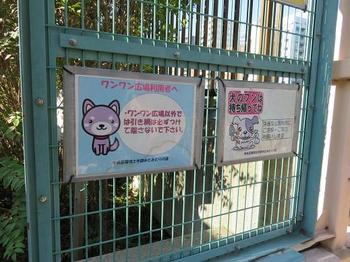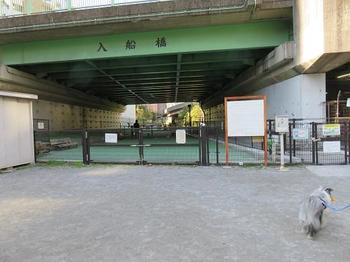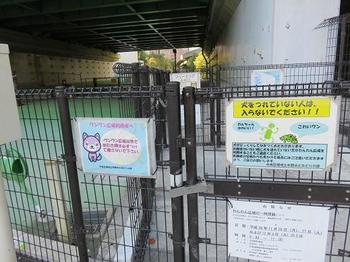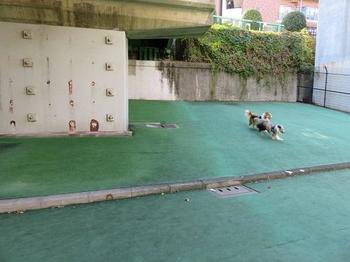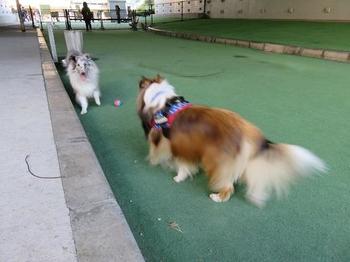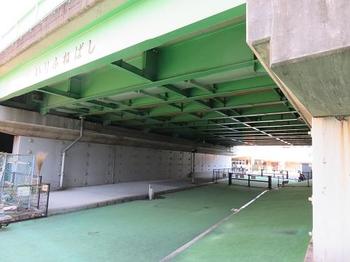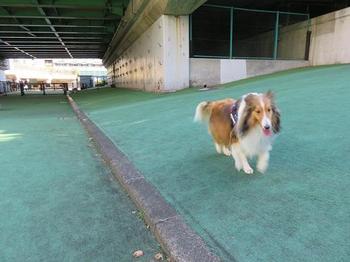This project is also to walk along the ruins of a real river in Chuo-ku.
And the river is Sakuragawa.
Sakuragawa was called "Yachimachibori" in the Edo period. (It is said that the length from the estuary was a moat in about eight towns. And the current notation has been changed to "Hatchobori". ) Then, in 1880 (1880), it was changed to Sakuragawa by Tokyo Metropolitan Government. It is said that "Sakuragawa" was changed to "Kaedegawa". Shin-Sakurabashi, Sakurabashi, Nakanohashi, Hatchobori Bridge, and Inari Bridge were bridged. Sakuragawa joined the Kamejima River (Minato 1-chome) from the junction of the Kaede River and the Kyobashi River, at the time of Danshobashi (Shintomi 1-chome). Landfill construction of Sakuragawa began in 1960 (1960), and construction up to Hatchobori Hashimoto-ryu was completed in 1972. And the estuary that had been left until the end was reclaimed in 1986 (1986), and Sakuragawa will disappear.
It will be a start from Dansho Bridge. The Kaede River originally flows under the Dansho Bridge, and Sakuragawa starts at the time of this bridge. At present, Kaedegawa is at the Metropolitan Expressway, and cars were flowing instead of water. And when it comes to Danshobashi, it is famous as one of "Mitsuhashi". You may go to the 11th Chuo-ku Tourism Test next year. If you have forgotten it, you need to review it.
Currently, at the confluence of Sakuragawa and Kaedegawa, the buildings of the Metropolitan Expressway Co., Ltd. Shintomi Branch Office and the Metropolitan Police Department Expressway Traffic High Speed Police Corps are built.
From Shin-Sakurabashi, go toward Hatchobori, and it is near Sakurabashi. The lower left is a photo of Sakurabashi pumping station. And the lower right is the site of Labor Square Tokyo. All of them were located on the site of Sakuragawa.
It seems that there is a plan to build a base facility for lifelong learning centered on the library on the site of Labor Square Tokyo.
Then, from the vicinity of Sakurabashi, follow Kajibashi-dori toward Hatchobori.
You can see Keika Square on your right hand. Originally, where Keika Elementary School was located, there is still a quaint building, such as using curves with a large curved corner.
In front of this Keika Square, there is an explanation board for "Hatchobori's Powerful / Concentric Kumiyashiki Ruins".
Speaking of Hatchobori, it is synonymous with the powers and concentrics under the town magistrate, and when I was young, I remember that lines such as "Yachimachibori's husband" were used. .
It means that power and concentric mansions were concentrated near Kayabacho from the northern shore of this "Yachimachibori".
And when you walk to Shin-ohashi-dori St., you will already be Hatchobori Station.
Immediately next to it, there were the nameplates of "Nakanohashi Tohoku Children's Amusement Park Chuo-ku" and "Chuo-ku Sakuragawa Park". . I thought it was a little strange, but I walked on the site of Sakuragawa this time! It's a great nameplate.
I used both of them. Yes, this Hatchobori station is near Nakanohashi, which was over Shin-ohashi-dori St.
In the bridge at the entrance of Sakuragawa Park, there are Iriichi Jizo Bodhisattva and Iriichi Kannon Bodhisattva. I also looked into this guardian of children and travelers and Kannon.
It seems that there was before the Sakuragawa was reclaimed, but there was no clear material left when it was built. . It is said that it is still managed by the Neighborhood Association of Irifune instead of Chuo-ku. Also, next to Jizo and Kannon, there is a tooth decay prayer stone, and those whose teeth hurt prayed for healing. I was able to get a glimpse of the Japanese folk religion.
In Sakuragawa Park, there is also an explanation board for the site of Hatchobori (Sakuragawa).
Then, when you pass through the park, "Sakuragawa Nursery School in Chuo-ku, Tokyo", "Sakuragawa Keirokan in Chuo-ku, Tokyo", "Chuo-ku Women's Center Bouquet 21", "Chuo-ku Sakuragawa Rooftop Park" etc. are built, and the site of Sakuragawa is Chuo-ku It is effectively used for parks and facilities.
And the road between Sakuragawa Nursery School, Sakuragawa Keirokan, Chuo Ward Women's Center, and Sakuragawa Rooftop Park will be "Remaining Chuo-dori". Proceed south on this settlement Chuo-dori, you will continue to the Tsukiji Foreign Settlement Site (now Akashicho District), which was established in 1868. "Residential Chuo-dori" It's a wonderful naming that reminds you of a foreign settlement that you don't have now.
Then, this "Sakuragawa Rooftop Park" cannot be reckoned. There was a garden on the rooftop, and the water flowed, making it a healing spot that made you forget the hustle and bustle of the city. There was also a large open space, making it an attractive park.
And when you get off Sakuragawa Rooftop Park, the street in front will be "Tetsugunsu Street".
If you go south, of course you will continue to Tepposu Inari Shrine. There was a bridge name plate of Inari Bridge at the mouth of the Sakuragawa River. It's the Kamejima River in front of you.
The photo on the left is a photo of Minami Takahashi from the site of Inaribashi.
The photo on the right is near the mouth of the Sakuragawa site. It's almost time for this city walk to the end.
Through this walk around the city, Sakuragawa was not buried for the reconstruction of earthquakes like other reclaimed rivers in Chuo-ku, the reconstruction of wars, and the holding of the Tokyo Olympics, but Chuo Ward Parks and facilities were built. I understand well that it is being used effectively. In addition, the name Sakuragawa was left in the municipal park and facility.
Even so, what will be built on the site of Labor Square Tokyo?
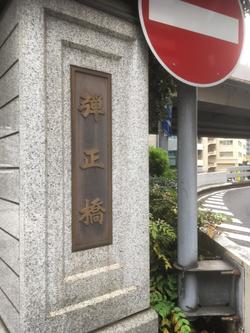
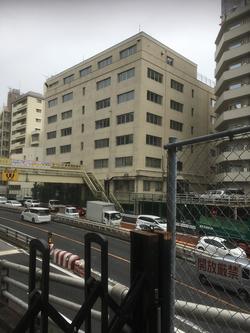
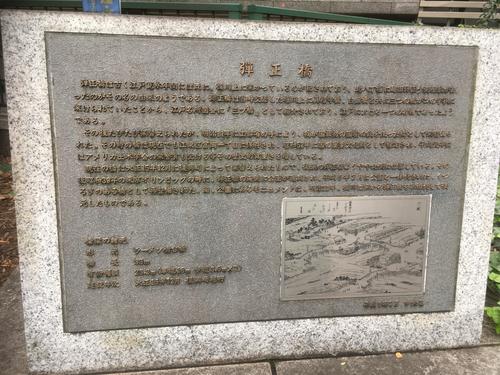

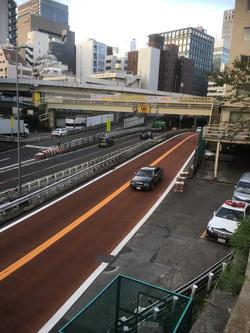
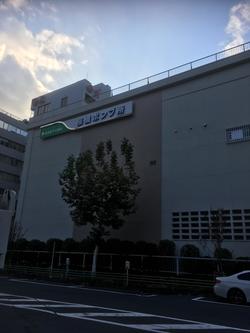
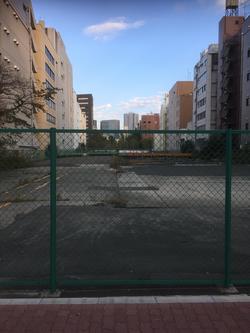
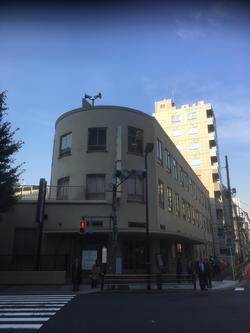
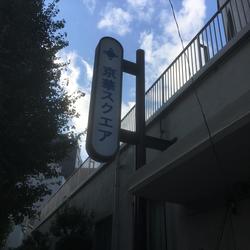
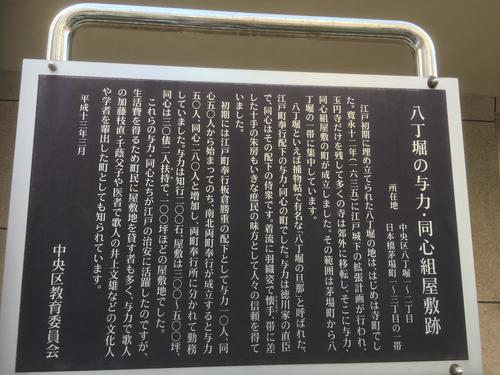
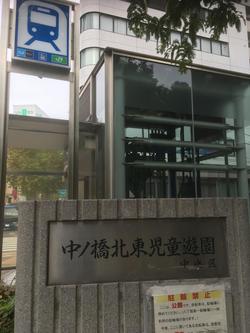
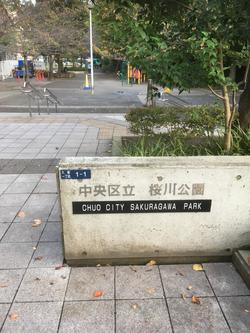
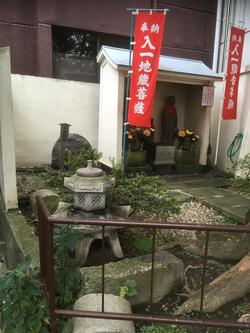
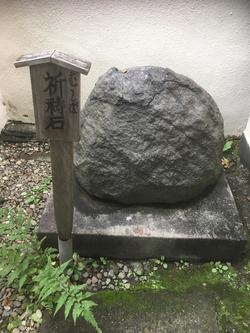
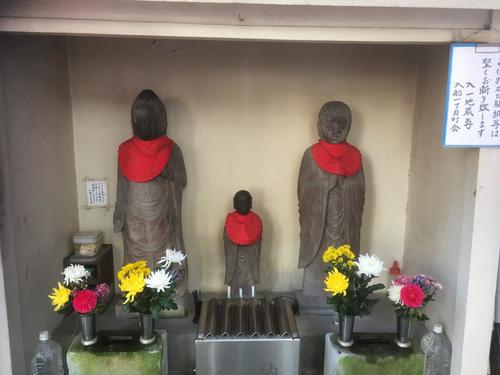
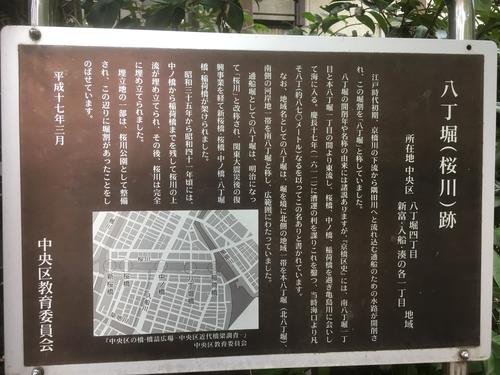
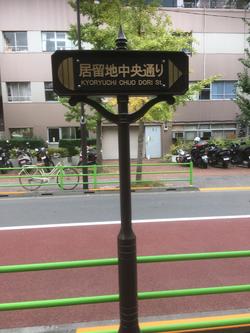
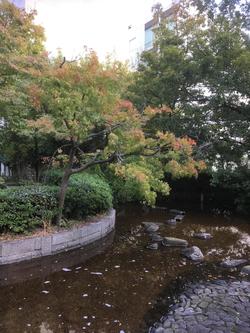
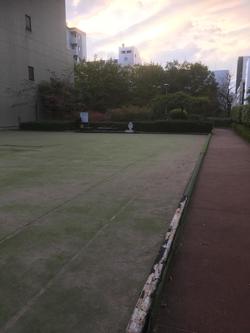

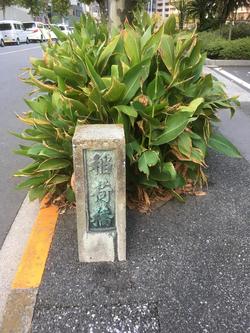
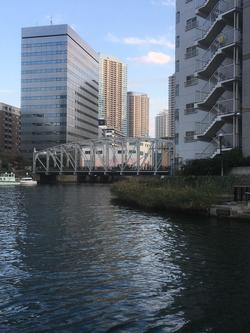
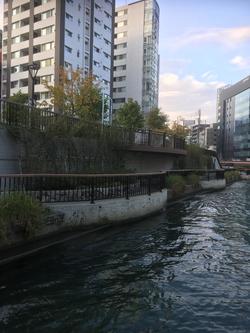
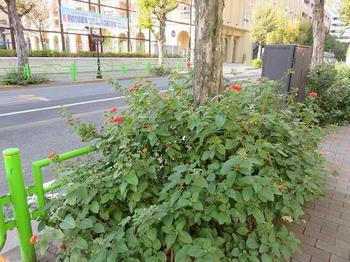
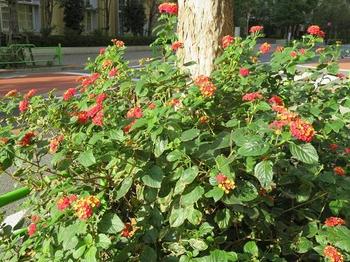
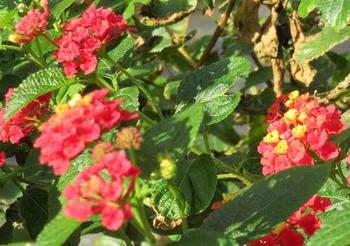
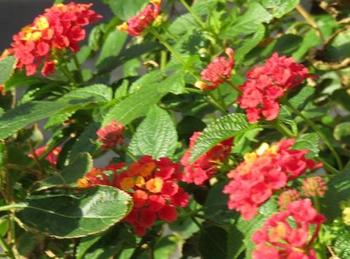
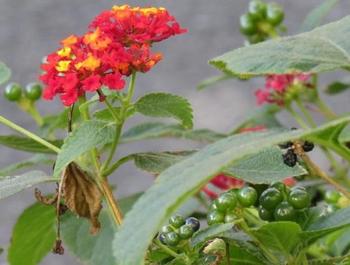
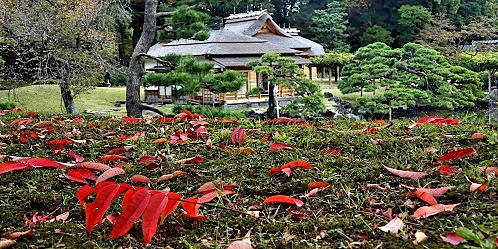
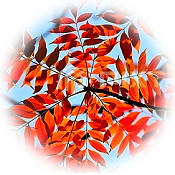 The season has come when the trees in the Hamarikyu Onshi Garden are colored. In particular, the autumn leaves of Hasenoki, which is called the seasonal word Tomonari "Hazemomiji", stand out.
The season has come when the trees in the Hamarikyu Onshi Garden are colored. In particular, the autumn leaves of Hasenoki, which is called the seasonal word Tomonari "Hazemomiji", stand out.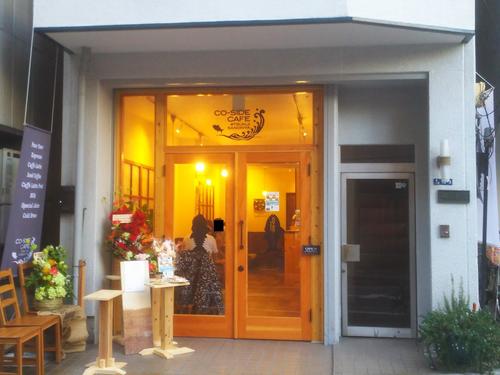
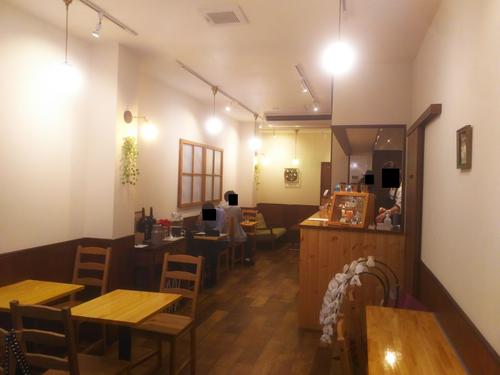
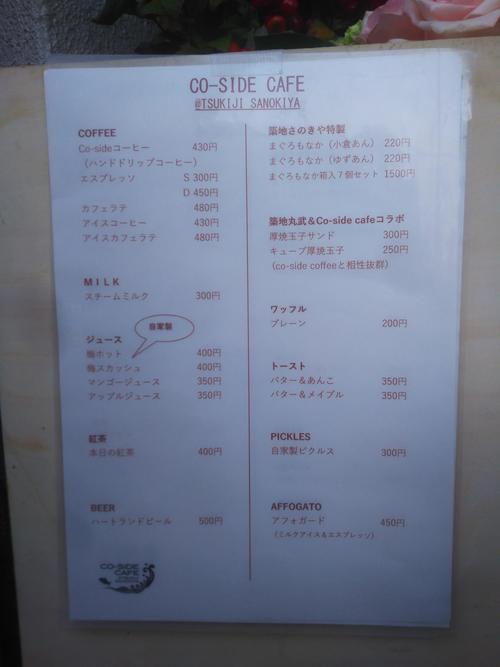
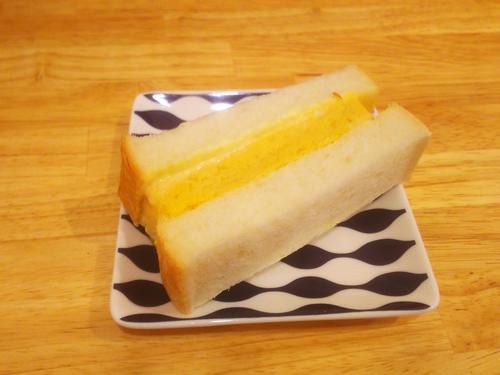
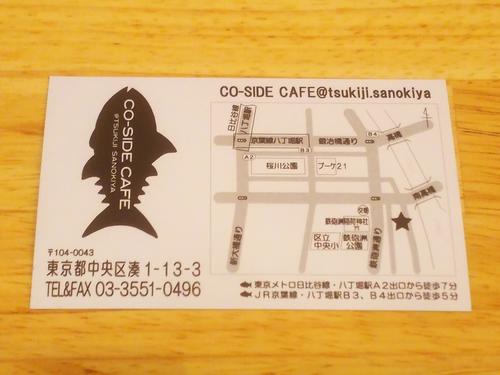
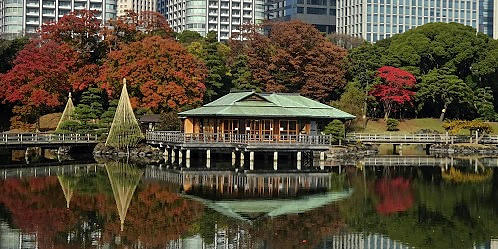
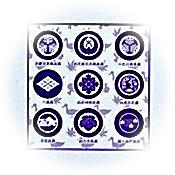 November 28 is "Good Garden (1128) Day".
November 28 is "Good Garden (1128) Day".